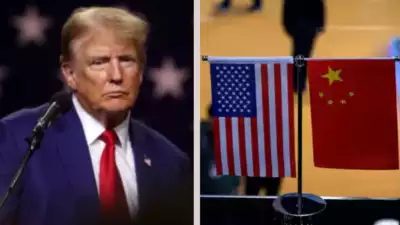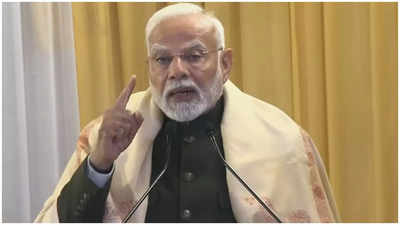How Trump’s tariff plans will impact China’s economy this time


Donald Trump’s re-election, along with his proposed 60 per cent tariffs on Chinese imports, presents a significant economic risks for China, the world’s second-largest economy.
Unlike the 7.5 per cent-25 per cent tariffs imposed during his first term, the new proposed tariffs are much higher. Additionally, China’s economy is now more vulnerable than it was during Trump’s previous presidency.
1. Property sector crisis
The property sector, which previously contributed approximately 25 per cent of China’s economic activity in 2018, helped absorb the impact of trade tariffs. Local governments maintained stable finances through land auctions for residential developments.
However, since 2021, the real estate sector has experienced a severe decline, causing local government revenues to diminish substantially.
The oversupply of housing in China suggests that the real estate sector may never regain its role as the primary driver of the country’s economic growth.
2. Factory price reductions
The combination of property sector issues, debt burden and reduced consumption has created deflationary pressures. The government’s strategy of channeling resources towards manufacturing rather than consumers has resulted in industrial surplus, leading to factory price reductions.
Producer prices fell to minus 2.8 per cent in September 2024, compared to 4.6 per cent inflation in July 2018. Consumer inflation decreased to 0.4 per cent from 2.1 per cent during this period.
Deflation, which negatively impacts consumption, businesses, and growth, could worsen significantly if tariffs reduce external demand, further intensifying industrial overcapacity.
Also Read: Trump vs Harris – who won which state? Here’s state-by-state breakdown of winners
3. Chinese household challenges
Chinese household expenditure remains under 40 per cent of GDP, significantly trailing the worldwide average by 20 percentage points, due to insufficient wages, pensions, high youth joblessness and inadequate social support.
An increase requires additional borrowing or restructuring national income distribution to favour households over state and corporate interests.
This could be achieved through tax reforms, enhanced social benefits, improved retirement schemes and elimination of the internal passport system that creates rural-urban disparities.
However, authorities have prioritised developing the export-oriented manufacturing sector, achieving notable success in electric vehicles, solar power and batteries. This strategy has triggered protective tariffs across various regions, including the United States, Europe and Turkey.
Whilst China maintains strong competitiveness in certain sectors, it faces limitations in controlling external market demand.
4. Deterioration of the property sector
The deterioration of the property sector has resulted in unsustainable local government debt. According to the International Monetary Fund, total government sector debt reached 147 trillion yuan ($20.7 trillion) by end-2023.
Including household and corporate obligations, the total debt exceeds 350 trillion yuan, approximately triple the size of the economy, as reported by the Bank for International Settlements.
Also Read: How top US media outlets covered Donald Trump’s victory
5. US restrictions raised effective tariffs
The yuan depreciated approximately 10 per cent against the dollar from early 2018 to end-2019, and 4 per cent against a broader currency basket.
According to Capital Economics, US restrictions raised effective tariffs on Chinese exports by 2.4 percentage points, with the yuan’s decline offsetting these effects.
Current calculations suggest an 18 per cent yuan depreciation would be necessary to counter 60 per cent US tariffs, reaching 8.5 per dollar – rates unseen since the 1990s Asian financial crisis.
6. Other factors include
In response to the COVID-19 pandemic, Washington rolled out trillions of dollars in stimulus, including direct payments to consumers, which led to increased spending on Chinese-made goods.
Similarly, after Russia’s invasion of Ukraine, Moscow was cut off from many Western markets, prompting it to increase its imports from China. These unexpected advantages for Beijing are unlikely to recur.
Also read: US Election Results Live Updates



